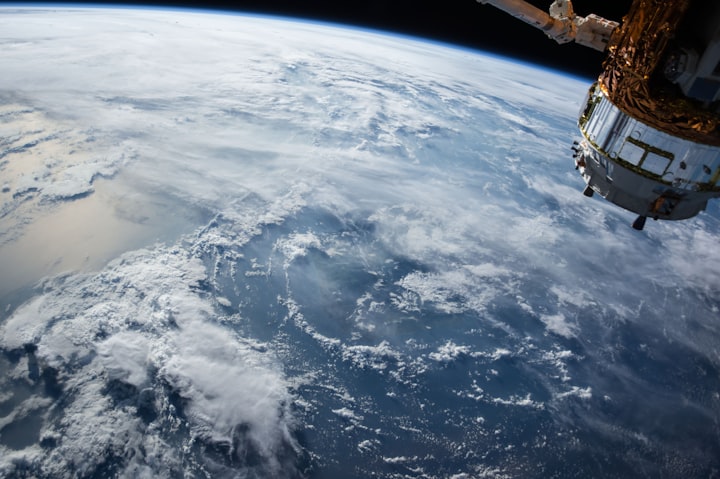How did the Earth form and evolve over time?
The Birth of a Planet: How the Earth Formed
The study of Earth's formation and evolution involves understanding how our planet formed and how it has changed over time. This includes examining the physical and chemical processes that occurred during Earth's formation, as well as the geological and biological events that have shaped the planet. Understanding Earth's past can help us better understand its present and future, as well as how it compares to other planets in our solar system and beyond. This field of study draws on a wide range of disciplines, including geology, astronomy, chemistry, and biology, and has implications for a variety of fields, including climate science, resource management, and the search for life on other planets.
1. The solar system and the conditions that led to the formation of Earth
The solar system is a collection of celestial objects that orbit around the Sun. It consists of the Sun and its planetary system, which includes Earth and eight other planets, as well as a variety of smaller objects, such as asteroids, comets, and dwarf planets.
The solar system formed about 4.6 billion years ago from a cloud of gas and dust known as a solar nebula. The formation of the solar system was driven by a number of physical and chemical processes, including gravity, radiation pressure, and the conservation of angular momentum.
As the solar nebula cooled, small particles of dust and ice began to stick together, forming larger and larger clumps. Eventually, these clumps grew into planetesimals, which collided and merged to form the planets.
The conditions that led to the formation of Earth were influenced by a number of factors, including the location of the solar nebula, the composition of the gas and dust, and the presence of other celestial objects. These factors all contributed to the formation of a planet with the right conditions for life to emerge.
2. Theories on the early formation of Earth, including the giant impact hypothesis and the nebular hypothesis
There are several theories on the early formation of Earth, each of which offers a different explanation for how our planet formed and evolved.
One theory is the giant impact hypothesis, which suggests that Earth formed from the collision of two smaller celestial objects, one of which was the size of Mars. This collision would have caused the debris from both objects to merge and eventually form Earth. This theory explains why Earth has a high density and a metallic core, as well as why the Moon is relatively large compared to other moons in the solar system.
Another theory is the nebular hypothesis, which suggests that Earth formed from a cloud of gas and dust known as a solar nebula. According to this theory, the solar nebula cooled and condensed, forming a disk of material around the Sun. As the disk cooled, small particles of dust and ice began to stick together, forming larger and larger clumps. These clumps eventually coalesced to form the planets.
Both of these theories have been supported by a variety of evidence, including observations of other planetary systems and computer simulations. However, many questions about the early formation of Earth remain, and ongoing research continues to shed new light on this fascinating period in the planet's history.
3. The cooling and solidification of the Earth's surface played a critical role in the development of a crust and mantle.
As the Earth cooled following its formation, the surface solidified into a rocky crust. This process would have been influenced by a number of factors, including the composition of the Earth's surface, the presence of water, and the amount of heat being released by the planet.
The development of a crust and mantle also involved the process of differentiation, in which the Earth's various layers formed based on their composition and density. This process likely occurred through a combination of convection and cooling, with denser materials sinking to the core and lighter materials rising to the surface.
The Earth's crust is made up of a variety of rock types, including igneous, sedimentary, and metamorphic rocks. It is relatively thin, averaging about 35 km in thickness, and is composed of a number of tectonic plates that are constantly moving and interacting with one another.
The Earth's mantle is a thick layer of semi-solid rock that lies beneath the crust. It is composed of various minerals, including olivine and pyroxene, and is the source of the heat and energy that drives many of the planet's geologic processes, such as plate tectonics and volcanic eruptions.
4. The emergence of Earth's atmosphere and oceans
The emergence of Earth's atmosphere and oceans was a crucial step in the development of our planet as a habitable environment.
The early Earth would have had a very different atmosphere than the one we have today, with much higher levels of carbon dioxide, methane, and water vapor. These gasses would have been released into the atmosphere as a result of volcanic activity and the decomposition of organic matter.
Over time, the Earth's atmosphere cooled and began to resemble the one we have today, with oxygen, nitrogen, and other gasses present in much lower concentrations. The emergence of Earth's atmosphere would have had a number of important consequences, including the development of weather patterns and the protection of the planet's surface from harmful solar radiation.
The Earth's oceans also emerged over time, as water vapor in the atmosphere condensed and fell to the surface as rain. The oceans would have been much warmer and more acidic than they are today, and would have contained a different mix of chemical elements. The emergence of the oceans would have had a number of important consequences, including the development of life and the regulation of the planet's climate.
5. Plate tectonics and the shaping of the Earth's surface
Plate tectonics is the process by which the Earth's lithosphere (comprised of the crust and upper mantle) is constantly moving and reshaping the Earth's surface. The lithosphere is broken up into a number of tectonic plates, which are in constant motion due to the convection of the molten material in the Earth's mantle.
As these plates move, they can interact in a number of ways. When two plates collide, one plate may be forced under the other in a process called subduction. This can result in the formation of mountain ranges, such as the Himalayas. Alternatively, when two plates move away from each other, magma from the mantle can rise up and create a new crust, resulting in the formation of mid-ocean ridges.
Plate tectonics has also played a role in the movement of the Earth's continents over time. For example, the supercontinent Pangaea existed around 200 million years ago and was composed of all the Earth's landmasses joined together. Over time, the tectonic plates carrying these landmasses have moved apart, resulting in the formation of the continents we see today.
Overall, plate tectonics has had a major impact on the Earth's surface, shaping its landscape and contributing to the formation of mountains, oceans, and continents. It is an ongoing process that continues to shape the Earth's surface today.
6. The formation of the oceans and the emergence of life
The Earth's oceans formed about 4 billion years ago, shortly after the formation of the planet. It is believed that water vapor in the Earth's early atmosphere condensed and fell to the surface as rain, eventually filling low-lying areas and forming the oceans. The water and other volatile substances that were present in the Earth's early atmosphere likely came from comets and other small bodies that collided with the Earth.
Life on Earth is thought to have emerged around 3.8 billion years ago, shortly after the formation of the oceans. The earliest forms of life were simple, single-celled organisms that lived in the oceans. These organisms were likely the first to photosynthesize, or use sunlight to convert carbon dioxide and water into energy.
Over time, these simple organisms evolved and became more complex, eventually leading to the diverse array of life we see on the planet today. The evolution of life on Earth was influenced by a variety of factors, including the availability of resources, changes in the Earth's climate, and the emergence of new environments.
Overall, the formation of the oceans and the emergence of life on Earth are closely linked and have played a significant role in shaping the planet's history and evolution.
7. Major events in the Earth's history
Throughout its history, the Earth has experienced a number of major events that have had a significant impact on the evolution of life on the planet.
One such event is the occurrence of mass extinction events. These are times when a large number of species die off in a relatively short period of time, often due to environmental changes or the impact of meteorites or other celestial bodies. The most famous mass extinction event was the K-T extinction, which occurred about 66 million years ago and wiped out the dinosaurs.
Other major events in the Earth's history include significant climate changes. These can be caused by a variety of factors, such as changes in the Earth's orbit, volcanic eruptions, or the release of greenhouse gasses into the atmosphere. These climate changes can have a major impact on the Earth's environment and can lead to the emergence or extinction of certain species.
Overall, major events in the Earth's history have shaped the evolution of life on the planet and have had a significant impact on the Earth's climate and environment. Understanding these events is important for understanding the Earth's past and for predicting and mitigating the impacts of future events.
8. Conclusion
In conclusion, the Earth formed about 4.5 billion years ago, shortly after the formation of the solar system. It is believed to have formed from a cloud of gas and dust that surrounded the young Sun, and it cooled and solidified over time, creating a crust on its surface. The heat generated by the cooling process caused molten magma to rise to the surface, creating volcanoes and shaping the Earth's surface through a process called plate tectonics.
The Earth's oceans formed around 4 billion years ago, and life on Earth is thought to have emerged around 3.8 billion years ago. The earliest forms of life were simple, single-celled organisms that lived in the oceans, and over time, these organisms evolved and became more complex, leading to the diverse array of life we see on the planet today.
Throughout its history, the Earth has experienced a number of major events, including mass extinction events and significant climate changes, which have shaped the evolution of life on the planet and had a significant impact on the Earth's climate and environment.
The Earth is a constantly changing planet, and understanding its history is important for predicting and mitigating the impacts of future events and for protecting the planet's future.






Comments
There are no comments for this story
Be the first to respond and start the conversation.